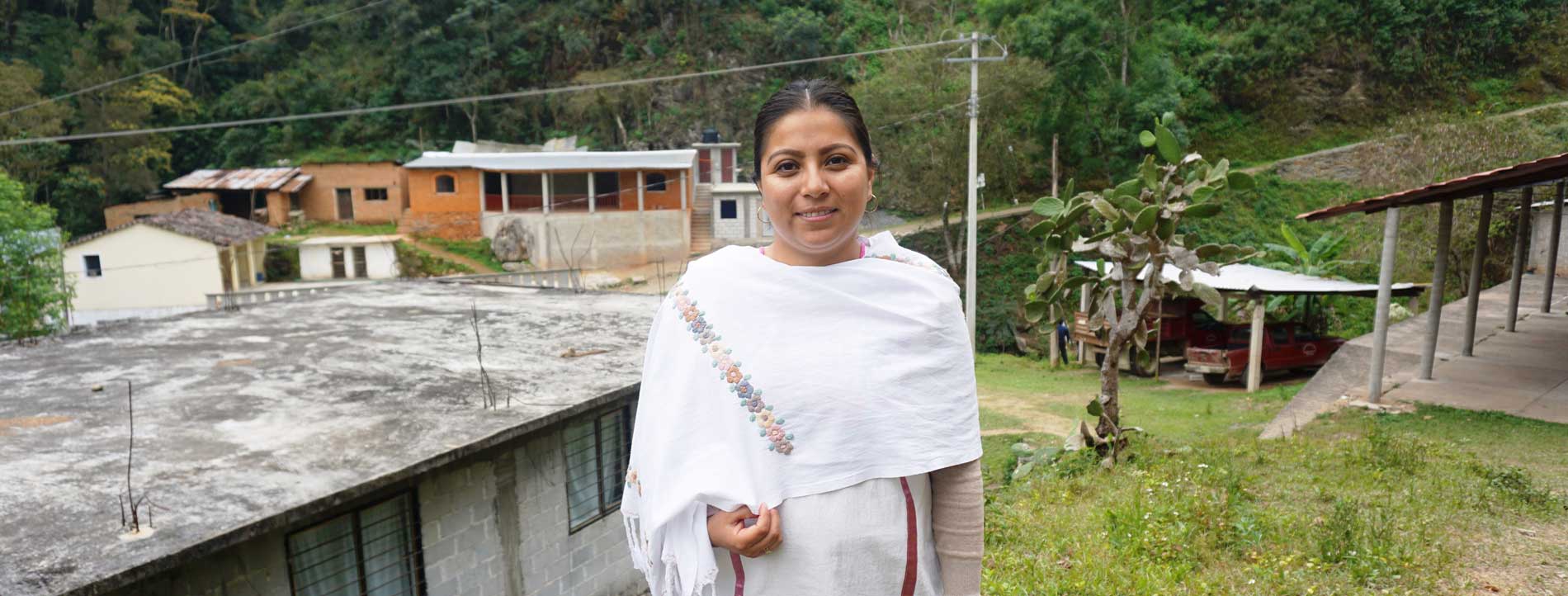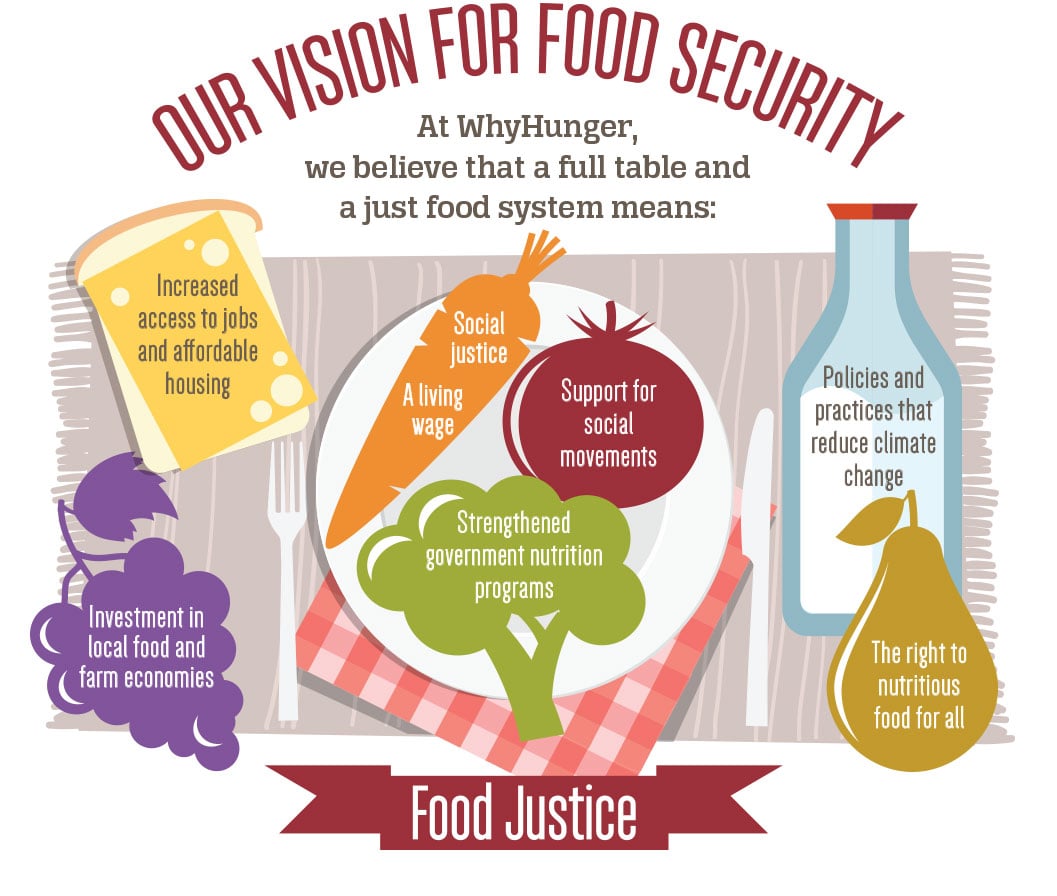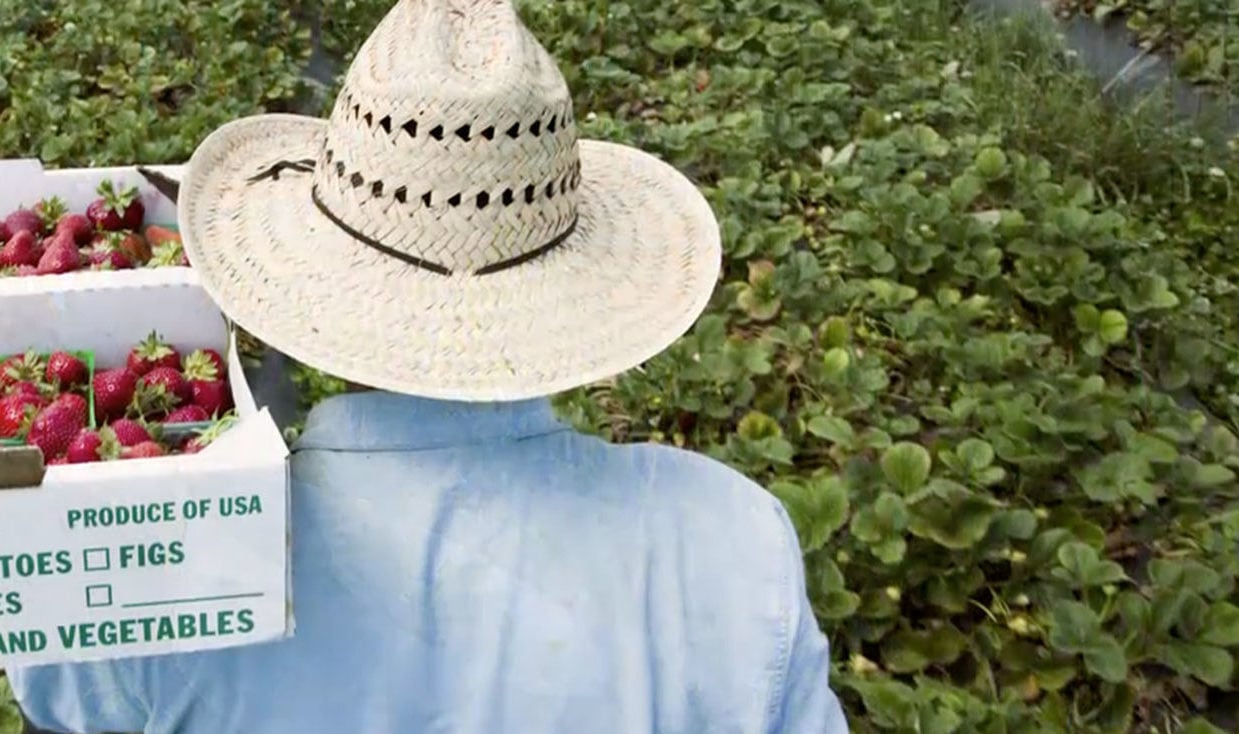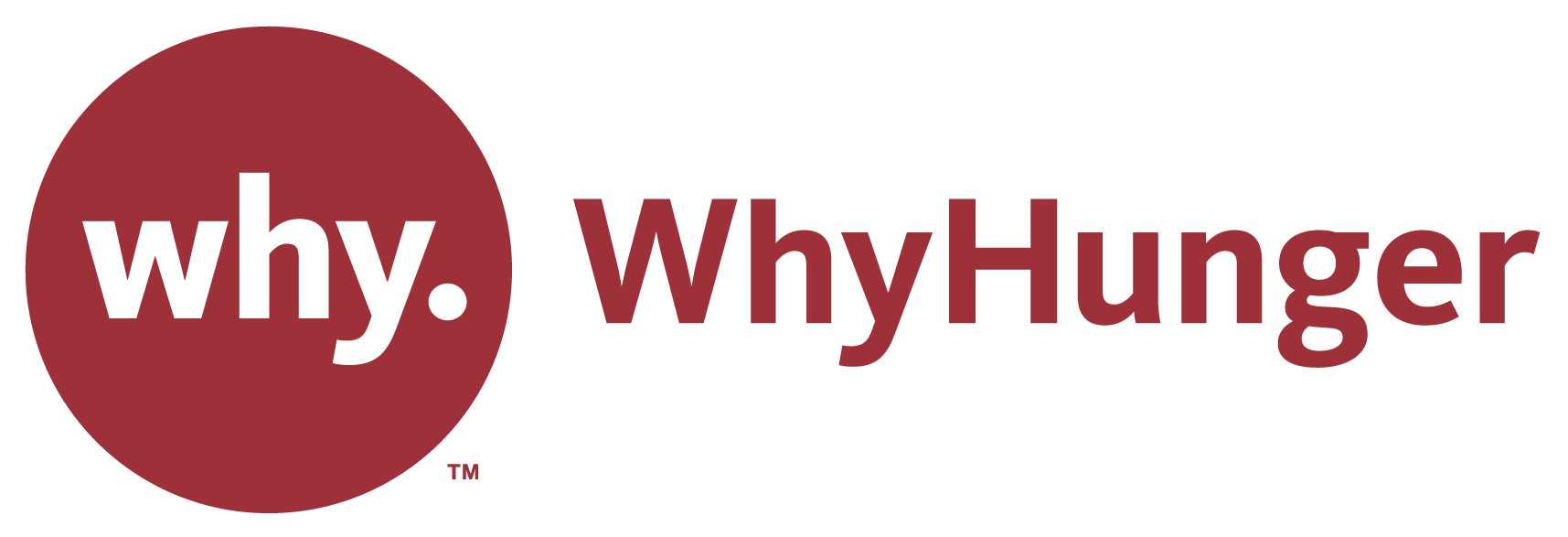
Just the facts
Hunger, Poverty and COVID-19 in the U.S. and Globally
Hunger in the U.S. and around the world is caused by various interconnected social and economic factors. Our world is increasingly complex and divided. Inflation, war, the COVID pandemic, and climate change are impacting food insecurity around the globe and across the US. We realize that one web page can hardly do justice to all the facts and thoughts on this matter. Our main goal with this page is to provide a brief overview of up-to-date hunger facts in an attempt to educate the public about the root causes of hunger and its realities across the globe.
Looking at the communities that are hit hardest by climate crises, economic injustice, structural racism, health injustice and hunger, it’s important to recognize that food insecurity does not affect everyone the same way. BIPOC (Black, Indigenous, People of Color) communities, women and children have faced the consequences of the pandemic and of food insecurity at higher rates than other communities.
Given our technological capacity, we know that we can produce enough food to feed every person on earth1. So why is there still hunger and what can we do about it? The root causes of hunger are due to the systems, policies and institutions that benefit multinational corporations and wealthy nations, while leaving millions of people without access to food, land, water and sustainable livelihoods. Our global food system is structured to value profits over people and the planet.
In other words, hunger is caused by poverty and injustice. Learn more about how WhyHunger and our allies across the globe are working to transform these systems, end hunger and ensure everyone’s right to nutritious food.

WORLD HUNGER
- Pre-pandemic, an estimated 2 billion people around the world were struggling to put food on their tables2.
- 135 million people in 55 countries with pre-existing food insecurity issues are left even more vulnerable to the consequences of COVID-19. This means that they are battling the threats of both hunger and the virus simultaneously3.
- The World Food Programme is calling 2022 the “year of unprecedented hunger.” Nearly 828 million people around the world go to bed hungry every night. The number of people facing acute food insecurity has climbed from 135 million to 345 million since 2019. 50 million people in 45 countries are inching towards famine4.
- Just as the world was beginning to recover from the damaging effects of COVID-19, another crisis was unfolding with lasting implications. The ongoing war in Ukraine, involving two of the biggest producers in agriculture, is disrupting supply chains, affecting the prices of grain, fertilizer and energy. This war threatens to increase the number of malnourished individuals, especially in women and children globally5.
HUNGER IN AMERICA
- Hunger is not a new problem in America. Compounding factors including inflation and rising food costs, policy changes, pandemic assistance rollbacks, climate change and global conflict further exacerbating the social injustices that have long existed at the root of hunger, from racism to the lack of a living wage.
- WhyHunger’s frontline partners are seeing consistently high rates of families and individuals who need to rely on food charity to make ends meet.
- In 2022, more than 44 million people, including more than 13 million children, in the U.S. struggled with hunger, according to the USDA.6
- Approximately 1 in 8 households (17 million), were food insecure in 2022. This is a significant rise from the 13.5 million households experiencing food insecurity in 2021.
- 11.7 million adults lived in households with very low food security in 2022.
- As these temporary relief packages ended, we saw food insecurity rates rise again.
- Hunger doesn’t affect everyone equally. The systemic injustice at the root of hunger continues to result in a disproportionate impact on Black, Indigenous and other communities of color across the U.S. The 2022 USDA data reveals that Black (22.4 percent) and Latinx (20.8 percent) households are impacted far above the national average of 12.8% and more than double that of white households (9.3%.)6
-
- A study from the American Society of Nutrition estimated that 45.7% of U.S. American Indian and Alaska Native are food insecure.7
- 24.3% of single-parent households headed by women in 2021 did not know where their next meal was coming from.8
- Food insecurity among Black or Latino individuals is higher than white individuals in 99% of U.S. counties9
- 1 in 3 people who are food insecure are unlikely to qualify for SNAP, the nation’s largest food assistance program9.
- Rural counties (those outside of major metropolitan areas) have the highest rates of food insecurity out of all counties in the United States9.
- The vast majority of people who grow, pick and process our food live in poverty and cannot afford to buy adequate healthy food. 86% of jobs in the food system offer very low wages at the poverty level and below the poverty level.10.
- The charitable food system - Food banks, pantries and soup kitchens, have been pushed to their limits. A study from WhyHunger and Duke University conducted in 2020 found that more than half of emergency food providers were forced to partially suspend programming while demands increased due to COVID-19.11.

POVERTY
Poverty, a root cause of hunger, is also often indicated by marginal income and limited access to healthcare, education, clothing and shelter.
In the U.S.:
- Before the pandemic, 39.4 million people were living in poverty in the U.S. More than 12% of the population12.
- 2022 federal guidelines set the poverty rate at $27,750 for a family of four15
- In 2021, 37.9 million people were living in poverty (11.6 percent) according to the U.S. Census Bureau.13
- 40% of Americans are living just one paycheck away from poverty, making impossible decisions between paying their bills, feeding their families or filling their prescriptions.14
- More than a third of US families that work full-time even before the pandemic, do not earn enough money to cover their most basic needs, including housing, food and child care.15
GLOBALLY:
- The economic fallout from the coronavirus pandemic could push half a billion more people into poverty 16.
- In September 2022 the World Bank updated the international poverty line from $1.90 to $2.15 per person per day.17
- Due to the effects of the pandemic and war in Ukraine, the World Bank estimates an additional 75 million to 95 million people will be living in extreme poverty in 2022, compared to pre-pandemic projections18
- Over the last 10 years, before the global health crisis was in the picture, the relatively consistent poverty reduction we’ve seen every year since the 1990’s began to slow. COVID-19 is not the only factor sending more and more people below the poverty line – armed conflict and climate change are also major threats19.
- In 2018, the World Bank introduced additional poverty metrics intended to be more reflective of global poverty. But ongoing conflicts and political instability hinder data collection in the world’s poorest nations, and poverty rates are almost nonexistent for many countries past 2014; namely, Sub-Saharan Africa and India.20
For more information on WhyHunger's vision for a world free from hunger, visit Our Work.
RESOURCES
- Food and Agriculture Organization
- United States Department of Agriculture
- Center on Budget and Policy Priorities
- United States Census Bureau
- Economic Policy Institute
- Food Chain Workers Alliance
- Feeding America
- 1 World Hunger Education Service. “2018 World Hunger and Poverty Facts and Statistics.” Revised May 25, 2018. https://www.worldhunger.org/world-hunger-and-poverty-facts-and-statistics/#produce1
- 2 Food and Agriculture Organization. “The State of Food Security and Nutrition in the World 2021.” https://www.fao.org/3/cb4474en/online/cb4474en.html#chapter-2_3
- 3 Global Network Against Food Crises, Food Security Information Network. 2020 Global Report on Food Crises: Joint Analysis for Better Decisions. 2020. Accessed October 22, 2020. https://docs.wfp.org/api/documents/WFP-0000114546/download/?_ga=2.90253727.46253289.1603293682-336947070.1603293682
- 4 World Food Programme. “A global food crisis.” https://www.wfp.org/global-hunger-crisis
- 5 Food and Agriculture Organization. “The State of Food Security and Nutrition in the World 2022.” https://www.fao.org/3/cc0639en/online/cc0639en.html
- 6 USDA Economic Research Service. “Household Food Security in the United States 2022.” Accessed November 17, 2022. https://www.ers.usda.gov/webdocs/publications/107703/err-325.pdf?v=5710.2
- 7 Cassandra J Nikolaus, Selisha Johnson, Tia Benally, Tara Maudrie, Austin Henderson, Katie Nelson, Trevor Lane, Valerie Segrest, Gary L Ferguson, Dedra Buchwald, Valarie Blue Bird Jernigan, Ka`imi Sinclair, Food Insecurity among American Indian and Alaska Native People: A Scoping Review to Inform Future Research and Policy Needs, Advances in Nutrition, Volume 13, Issue 5, September 2022, Pages 1566–1583, https://doi.org/10.1093/advances/nmac008
- 8 USDA Economic Research Service. “Food Insecurity by Household Characteristics.” Accessed September 19, 2022. https://www.ers.usda.gov/topics/food-nutrition-assistance/food-security-in-the-us/key-statistics-graphics.aspx/
- 9 2022. Mapping the Meal Gap 2022: A Report on County and Congressional District Food Insecurity and County Food Cost in the United States in 2020. Feeding America. https://www.feedingamerica.org/sites/default/files/2022-07/Map%20the%20Meal%20Gap%202022%20Report.pdf
- 10 Food and Nutrition Service, US Department of Agriculture. Supplemental Nutrition Assistance Program: Number of Persons Participating. Data as of July 10, 2020. https://fns-prod.azureedge.net/sites/default/files/resource-files/29SNAPcurrPP-7a.pdf
- 11 WhyHunger. “WhyHunger Analysis & Reflection: WhyHunger + Duke University World Food Policy Center “The Impact of COVID-19 on Hunger Relief Organizations” Survey Preliminary Results.” Last updated May 12, 2021. https://whyhunger.org/wp-content/uploads/2021/05/Section-1-Teaser_29Mar2021-AMC.docx-1.pdf
- 12 Coleman-Jensen, Alisha, Matthew P. Rabbitt, Christian A. Gregory, and Anita Singh. 2020. Household Food Security in the United States in 2019, ERR-275, U.S. Department of Agriculture, Economic Research Service. https://www.ers.usda.gov/webdocs/publications/99282/err-275.pdf?v=181
- 13 US Department of Health and Human Services. “Annual Update of the HHS Poverty Guidelines.” Federal Register, The Daily Journal of the United States Government. Published January 21, 2022. https://www.federalregister.gov/documents/2022/01/21/2022-01166/annual-update-of-the-hhs-poverty-guidelines
- 14 United States Census Bureu. Poverty in the United States: 2021. Current Population Reports. Accessed September 22, 2022. https://www.census.gov/content/dam/Census/library/publications/2022/demo/p60-277.pdf
- 15 Prosperity Now. “Vulnerability in the Face of Economic Uncertainty.” January 2019. https://prosperitynow.org/sites/default/files/resources/2019_Scorecard_Key_Findings.pdf.
- 16 Farberov, Snejana and Reilly, Patrick. “More than a third of working families can’t afford basic needs: study.” NYpost. Published September, 2022. https://nypost.com/2022/09/07/third-of-working-families-cant-afford-basic-needs-study/?utm_campaign=iphone_nyp&utm_source=mail_app
- 17 U.S. Global Leadership Coalition. “COVID-19 Brief: Impact on Food Security.” Last updated September 14, 2020. https://www.usglc.org/coronavirus/global-hunger/
- 18 World Bank. “Nowcast of Extreme Poverty, 2015-2022.” Accessed September 22, 2022. https://www.worldbank.org/en/understanding-poverty
- 19 World Bank. 2020. “Poverty and Shared Prosperity 2020: Reversals of Fortune.” Overview booklet. Washington, DC: World Bank. License: Creative Commons Attribution CC BY 3.0 IGO. https://openknowledge.worldbank.org/bitstream/handle/10986/34496/211602ov.pdf
